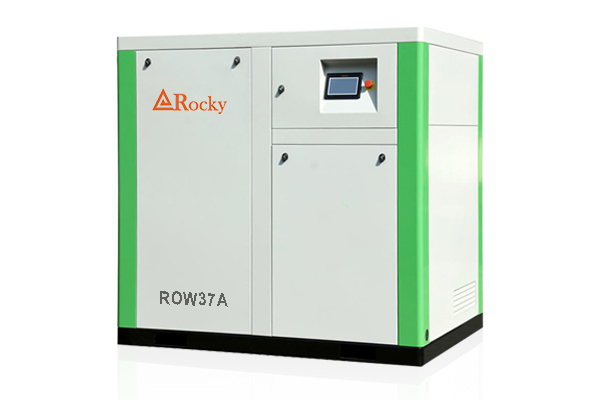
Maybe you only know the air compressor, because it is the most widely used type of compressor. However, oxygen compressors, nitrogen compressors and hydrogen compressors are also common compressors. This article focuses on the difference between an air compressor and an oxygen compressor to help you understand which type of compressor you want.
You will know:
What is an air compressor?
What is an oxygen compressor?
The difference between air compressor and oxygen compressor
What is an air compressor?
An air compressor is a device that converts power (using electric motors, diesel or gasoline engines, etc.) into potential energy and stores it in pressurized air (ie, compressed air). Through one of several methods, the power of the air compressor compresses the air more and more, and then, keeps it in the tank until it is called and put into use. The compressed air energy contained in it can be used in a variety of applications, using the kinetic energy of the air as it is released and the container is depressurized. When the tank pressure reaches its lower limit again, the air compressor turns and re-pressurizes the tank. Because it can be used for any gas/air, the pump must be differentiated from the pump while working in liquid.
What is an oxygen compressor?
The oxygen compressor is a compressor used to pressurize oxygen and provide it. Oxygen is a violent combustion-supporting agent, which can easily cause combustion and explosion.
The difference between air compressor and oxygen compressor
The air compressor directly compresses the air into the container. The air compressed by the air compressor consists of two parts: 78% nitrogen; 20-21% oxygen; 1-2% water vapor, carbon dioxide and other gases. The air in the "component" does not change after compression, but the size of the space occupied by these molecules.
The oxygen compressor contains oxygen and is directly compressed by oxygen. The compressed gas is high-purity oxygen and takes up little space.
The difference between an oxygen compressor and an air compressor is to ensure that it is oil-free.
1. In the oxygen compressor, that is, all parts in contact with the oxygen in the screw air compressor must be degreased and degreased strictly before being loaded. Tetrachloride is used for cleaning to avoid explosive carbon.
When replacing or repairing parts that will come into contact with compressed oxygen 2. Oxygen, the maintenance personnel must wash their hands first. The workbench and spare parts cabinet must also be clean and oil-free.
3. The amount of lubricating water for the oxygen compressor should not be too small or containing water to avoid a sharp rise in the temperature of the cylinder; the amount of cooling water for the blasting cylinder and the cooler must be lower than the high-pressure oxygen flow.
4. When the pressure change of the oxygen compressor is abnormal, the related valve should be replaced or repaired in time to avoid the continuous rise of cylinder temperature.
5. Pay attention to the working condition of the upper and the letters of the middle seat of the lower sealed oxygen compressor. If the sealing condition is not good, the filling port can be replaced by the piston rod cylinder in time to prevent the oil from being lifted to the oxygen compressor.